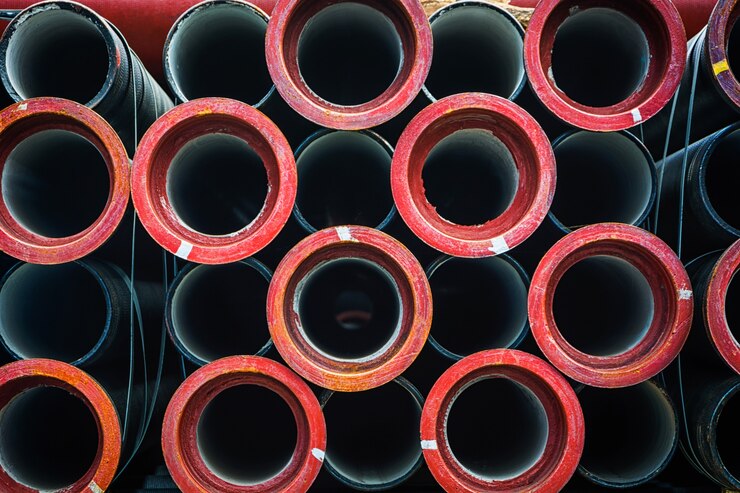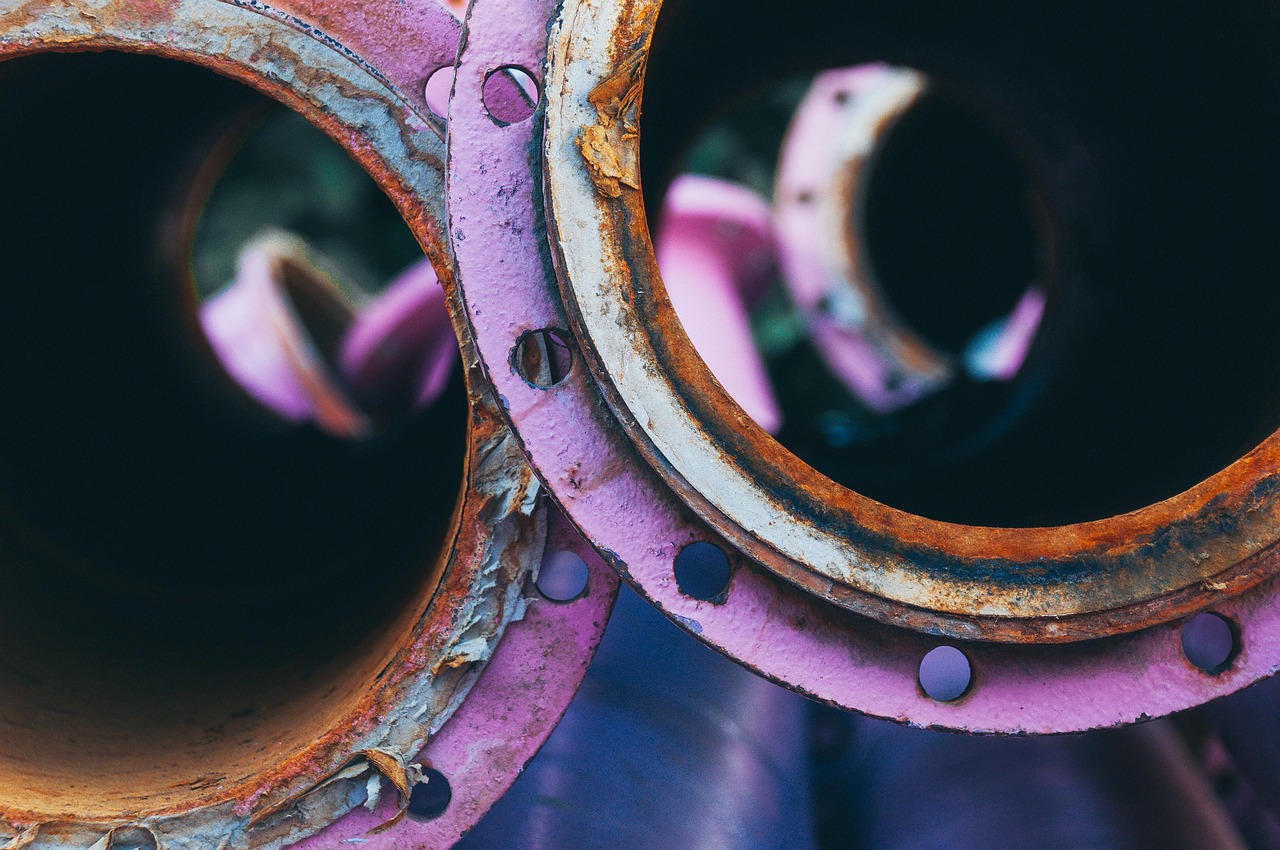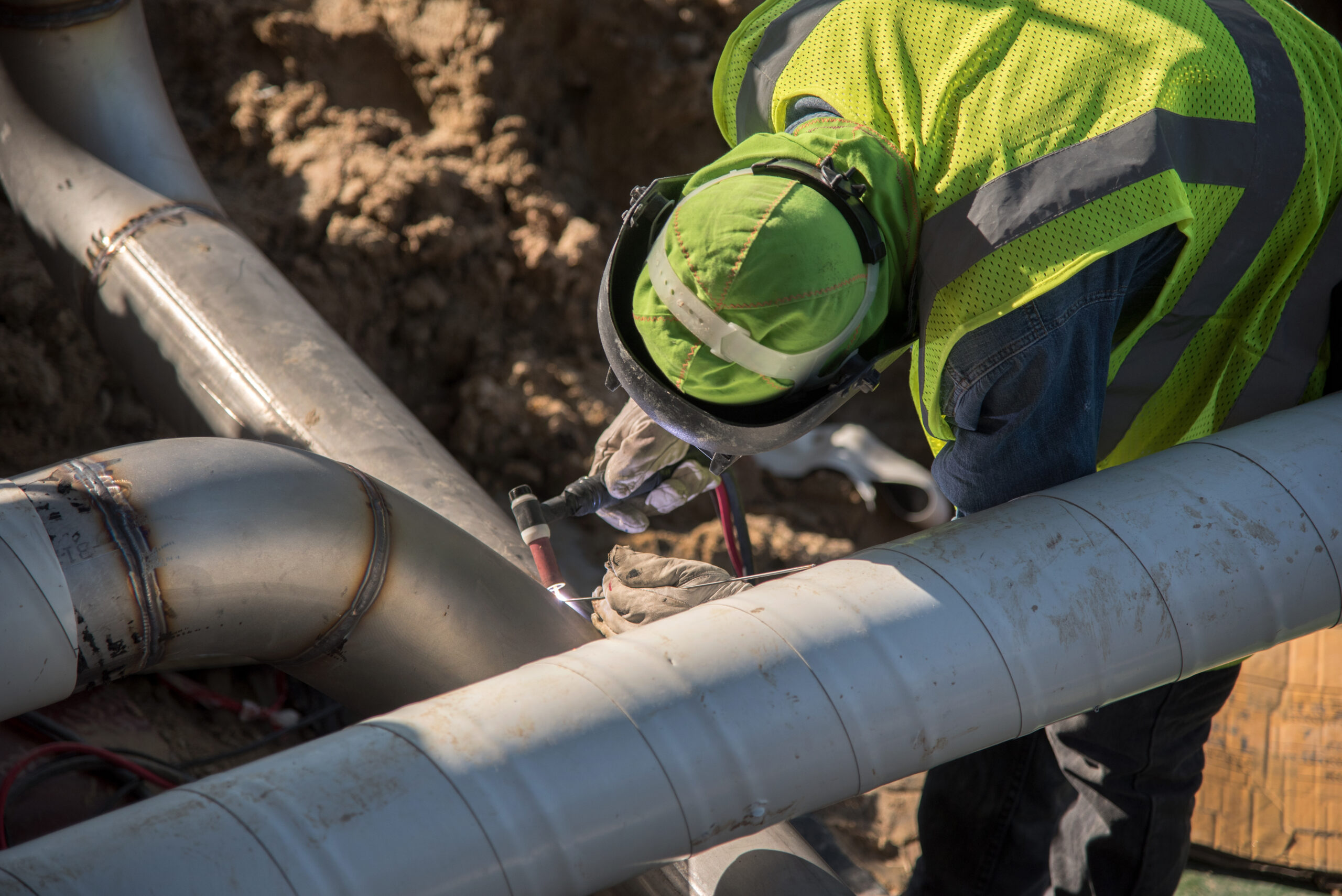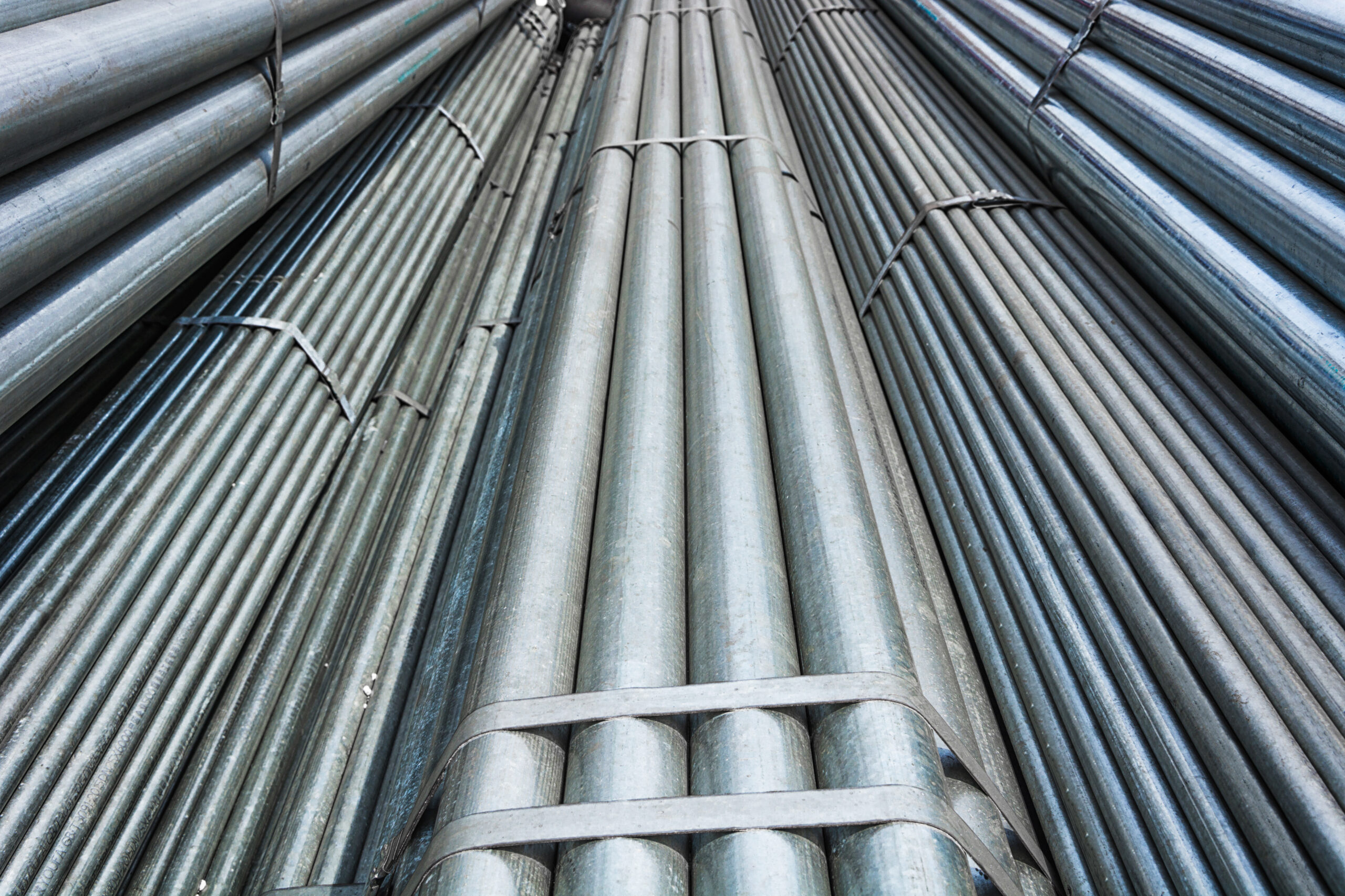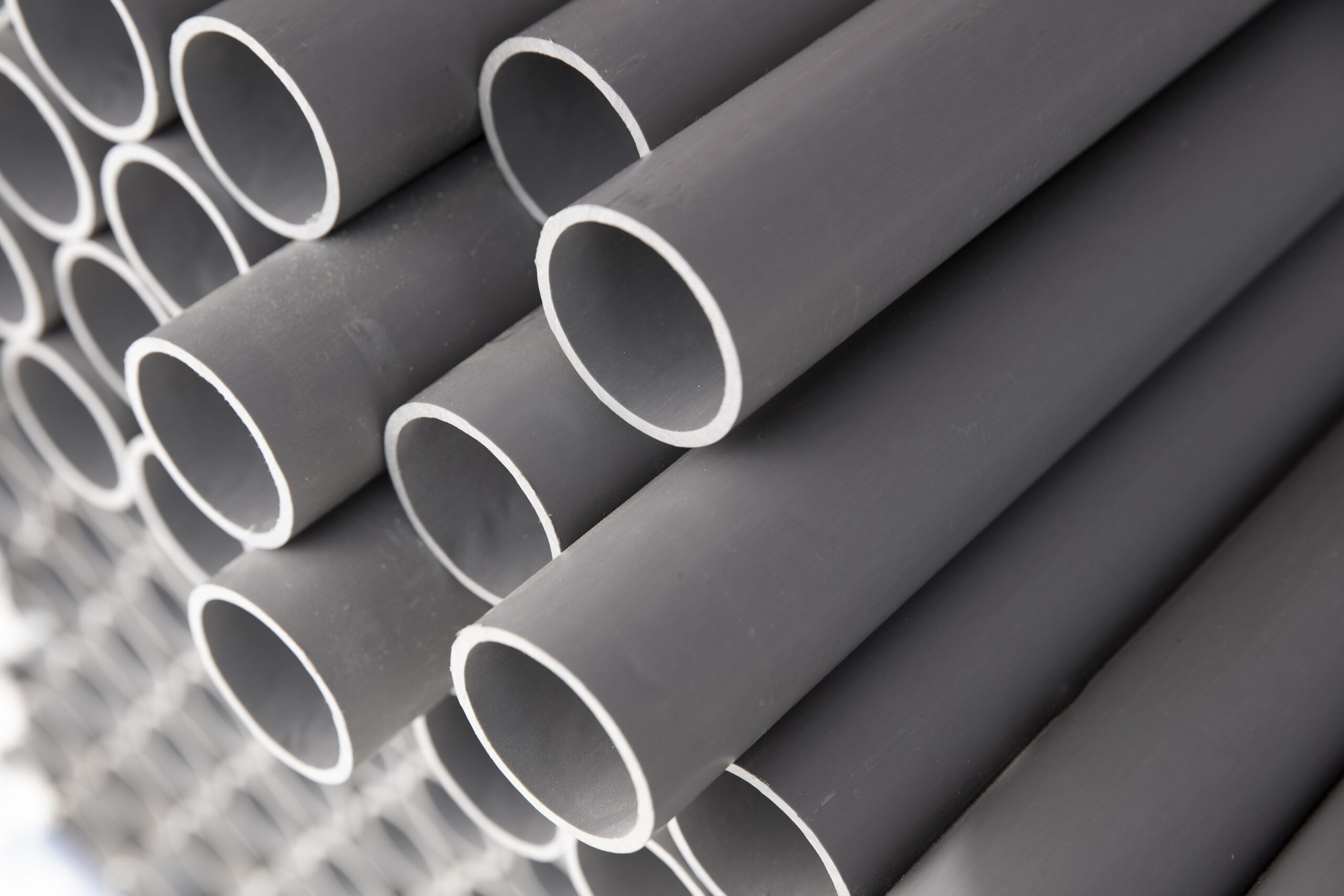Internal corrosion in pipelines is a silent threat lurking beneath the surface. It weakens the metal walls, leading to leaks and potential environmental disasters.
This comprehensive guide sheds light on the causes, detection methods, and preventive measures for internal corrosion, empowering you to safeguard your pipeline infrastructure. We’ll also explore how innovative solutions from Lined Pipe Systems (LPS) can further strengthen your defense against this relentless enemy.
What is Internal Corrosion in Pipelines?
Imagine a hidden enemy eating away at your pipes from the inside. That’s what internal corrosion is. It’s the deterioration of the metal surface due to its reaction with the transported fluid. Over time, this relentless process thins the pipe walls, increasing the risk of leaks and ruptures. Pipelines carrying oil, gas, or water with high chloride content are especially vulnerable.
The Culprits Behind Internal Pipeline Corrosion
Several factors conspire to create the perfect storm for internal corrosion:
- Chemical Composition: The fluid itself can be a villain. Hydrogen sulfide (H2S) and carbon dioxide (CO2) are notorious for accelerating corrosion.
- Water, the Accomplice: Water’s presence creates an electrolyte medium, facilitating the flow of electric current that fuels corrosion reactions.
- Temperature and Pressure: Turn Up the Heat (Literally) High temperatures and pressures act as catalysts, speeding up the corrosion process.
- Microbial Activity: Unseen Threats Microorganisms lurking within the pipeline can create a breeding ground for corrosion by producing harmful byproducts.
Additionally, we suggest reading out, “How to Protect the Weld Zone From Internal Corrosion?”
Internal Corrosion Detection Methods
Early detection is critical to prevent internal corrosion from turning into a major crisis. Here are some weapons in the pipeline operator’s arsenal:
- Pigging: These ingenious “pipeline crawlers” travel through the pipe, inspecting the internal surface for signs of corrosion and damage.
- Intelligent Pigging: Taking pigging to the next level, these advanced tools come equipped with sensors that measure wall thickness and detect corrosion with pinpoint accuracy.
- Ultrasonic Testing (UT): Imagine using sound waves like a metal stethoscope. UT sends high-frequency sound waves through the pipe wall to identify anomalies caused by corrosion.
- Electromagnetic Acoustic Transducer (EMAT): This technology utilizes electromagnetic fields to generate sound waves, offering another effective method for non-intrusive corrosion detection.
Preventive Measures for Internal Pipeline Corrosion
The best defense is a good offense. Here’s how to fortify your pipelines against corrosion specially the internal ones:
- Pipeline Coatings: Think of a protective shield. Applying corrosion-resistant coatings on the internal surface acts as the first line of defense.
- Cathodic Protection: Imagine sacrificing a soldier to save the army. Cathodic protection systems introduce sacrificial anodes or impressed current to attract corrosion, safeguarding the pipe itself.
- Chemical Inhibitors: These are like adding a magic potion to the fluid stream. Chemical inhibitors act as corrosion fighters, suppressing the reactions that lead to metal degradation.
- Regular Inspection and Maintenance: Eternal vigilance is key. Regular inspections and maintenance programs allow you to monitor pipeline integrity and identify potential problems before they escalate.
Additionally, you can read out in detail “How to Prevent Internal Pipe Corrosion.”
LPS: Reinforcements for Your Pipeline Defense
Lined Pipe Systems (LPS) offers a cutting-edge arsenal to combat internal corrosion and bolster your pipeline’s defenses:
- FlexSleeve® for Thin Linings: This innovative solution provides a robust barrier for pipelines with thin internal linings. It safeguards against corrosion, leaks, and mechanical damage, ensuring pipeline integrity.
- CCB® Sleeve for Thin Linings: A strong contender for pipelines up to 12 inches in diameter, the CCB® Sleeve delivers exceptional protection for thin linings. Its cost-effective design and swift installation make it a valuable asset for various industrial applications.
- SealSleeve™ for Rubber & PU Linings: Traditional methods for pipelines lined with rubber or polyurethane often rely on mechanical joints, which can be expensive and prone to leaks. LPS’s SealSleeve™ eliminates this challenge. This ingenious system allows for standard welded joints while incorporating a lining extension within the sleeve itself. This ensures seamless lining continuity throughout the weld zone, enhancing pipeline strength and mitigating leak risks.
- SealSleeve™ for Thermoplastic Liners: Similar to its counterpart for rubber and PU linings, the SealSleeve™ for thermoplastics offers the same benefits of secure welded joints and continuous lining integrity. This technology caters specifically to pipelines lined with thermoplastic materials.
By incorporating LPS’s advanced sleeve technologies alongside traditional preventive measures, you create a multi-layered defense system against internal corrosion. This not only safeguards your pipeline infrastructure but also translates to operational efficiency and cost savings in the long run.
Furthermore, for more details, read, “How FlexSleeve & Joint Lock Rings Can Treat Internal Pipe Corrosion”
Conclusion
Internal corrosion is a formidable foe, but with knowledge, proactive strategies, and innovative technology to avoid internal corrosion from Lined Pipe Systems (LPS), you can emerge victorious.
By understanding the causes, employing effective detection methods, and implementing preventive measures like pipeline coatings, cathodic protection, and chemical inhibitors, you lay a strong foundation for pipeline health.
Further fortifying your defenses with LPS’s advanced lining systems like FlexSleeve®, CCB® Sleeve, and SealSleeve™ for various lining materials creates a comprehensive shield against internal corrosion.
This multi-pronged approach ensures the safety, reliability, and longevity of your pipeline infrastructure. Remember, a robust pipeline system is not just about transporting resources – it’s about safeguarding the environment and the communities it serves.
By prioritizing internal pipeline corrosion prevention, you contribute to a sustainable future for your operations and the world around you.
Additionally, we suggest reading out, “All You Should Know About Internal Pipeline Corrosion.”
FAQs
Q1. What are the signs of internal corrosion in a pipeline?
Ans: Unfortunately, internal pipeline corrosion often goes undetected until a leak occurs. However, there might be some indirect signs like reduced pressure or flow rate within the pipeline. Regular inspections and using detection methods like pigging are crucial for early identification.
Q2. What is the most common cause of internal corrosion in pipelines?
Ans: The primary culprit is usually the chemical composition of the product being transported. Fluids containing hydrogen sulfide (H2S) and carbon dioxide (CO2) are particularly corrosive. Additionally, water presence, high temperatures, and microbial activity can all accelerate internal pipe corrosion.
Q3. How can I prevent internal corrosion in my pipelines?
Ans: A multi-pronged approach is key. Pipeline coatings, cathodic protection systems, and chemical inhibitors can be used to create a barrier and mitigate corrosion reactions. Thus, regular inspections and maintenance are essential for monitoring pipeline health. Additionally, lining technologies like LPS’s FlexSleeve®, CCB® Sleeve, and SealSleeve™ offer advanced protection for existing pipelines.
Q4. What are the environmental impacts of internal corrosion in pipelines?
Ans: Pipeline leaks caused by internal pipeline corrosion can release harmful substances into the environment, contaminating soil and water sources. Therefore, preventing leaks through corrosion control is crucial for environmental protection.
Q5. How much does internal pipeline corrosion cost pipeline operators?
Ans: The financial repercussions can be significant. Leaks can lead to expensive repairs, product loss, environmental clean-up costs, and potential fines for non-compliance with regulations. Investing in proactive corrosion prevention measures can save money in the long run.
Note: Furthermore, you can check fact sheet about internal pipe corrosion here.

